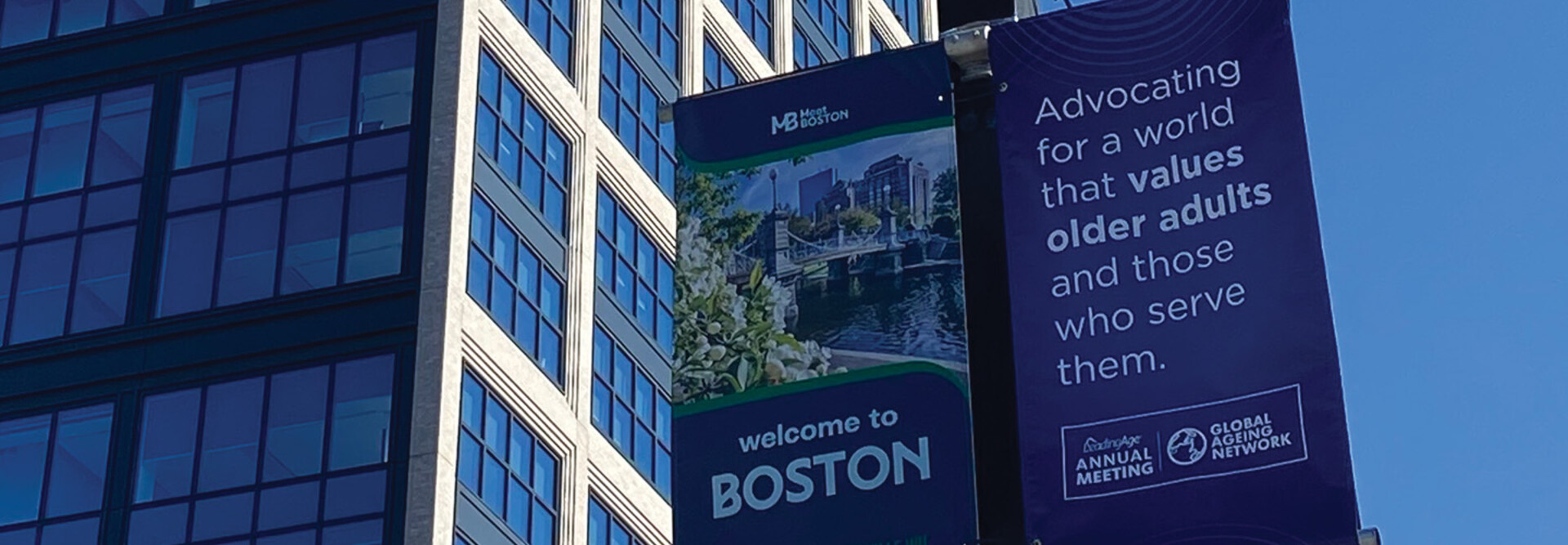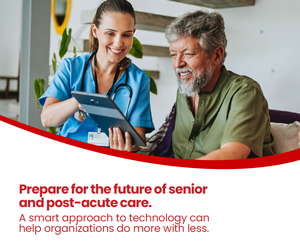Last year, the U.S. entered a period that one organization has called “Peak 65,” marking an expected surge of Americans reaching retirement age. More than 4.1 million people will turn 65 each year from 2024 to 2027, or 11,200 daily, according to the D.C.-based consumer education organization Alliance for Lifetime Income.
Older adults make up a significant part of the country’s population, yet the emerging technologies that are meant to improve daily life aren’t always designed with them in mind.
“The assumption is that older adults don’t like technology, or that they don’t use it, or that they’re afraid of it, or that they don’t understand it. What we’ve really found is that that’s not the case,” said Michelle Curnow, senior vice president of sales and brand at Asbury Communities.
She spoke during a session about her organization’s work with the AgeTech Collaborative from AARP at the 2025 LeadingAge Annual Meeting, taking place Nov. 2-5 in Boston.
Click the banner to learn how tech eases operational challenges and improves resident experiences.
At the Thomas Michael Menino Convention and Exhibition Center near the South Boston waterfront, banners highlighting the conference’s intention read: “Advocating for a world that values older adults and those who serve them.”
Curnow and her colleagues shared their expertise on how senior care organizations can improve their technology offerings by centering residents – current and prospective – and working in close partnerships to help develop solutions to support older adults.
Senior Care Organizations Can’t Shy Away from Innovation
Asbury Communities, which has locations across Delaware, Maryland, Pennsylvania and Tennessee, announced its partnership with AgeTech Collaborative from AARP last year on a testing space in one of its apartments where residents can try out new solutions and provide feedback to the involved startups.
The feedback for the innovation lab has been mostly positive, Curnow said: Most of the participants said that it increased their interest in smart home technology. This learning should signal to senior care organizations that their residents are also likely open to new technologies when given the chance to test and explore solutions themselves.
From left to right: Nick Patel, president of ThriveWell Tech; Michelle Curnow, senior vice president of sales and brand at Asbury Communities; Andy Miller, senior vice president of AARP Innovation Labs at AARP; and Todd Andrews, president of the community living division at Asbury Communities, present at a LeadingAge session Sunday, Nov. 2, 2025.
“I’ve been in the sector for eight years. It’s hard to push technology into this sector. It’s a tough thing to do, but the lab has helped us really open up to what technology can do, and I think it’s been a much easier path to adoption,” said Nick Patel, president of ThriveWell Tech, which was spun out of Asbury Communities’ IT arm.
Todd Andrews, president of the community living division at Asbury Communities, shared a few of the solutions that residents had tested. XanderGlasses helped a resident who was hard of hearing follow a conversation with loved ones for the first time in years because of its real-time captioning capabilities. The Lotus ring, which was recently named one of Time Magazine’s Best Inventions of 2025, allows residents to turn off a TV or lights with a simple device that doesn’t require an app or Wi-Fi setup.
“It’s important to make sure that whatever we do, it’s not complicated. I can tell you that, if it has an app, there’s half the group gone. If it’s difficult to operate, there’s another two-thirds of the group gone. And you have a small group at the end who might actually do it right,” he said.
Ultimately, senior care organizations hoping to adopt new technologies to improve the quality of life for residents and streamline workflows for staff need to keep their needs centered. They should also choose a solution to solve a distinct problem rather than implementing something just because it’s brand-new.
“Try to do some research and not just try everything. There are so many products on the market right now, and everything looks new and shiny, and you can get caught up in almost doubling your efforts because you’re trying this one and that one,” Curnow said.
Andrews added that senior care organizations have to strike the right balance of addressing the needs of current residents and adapting for prospective residents, who will likely be even more comfortable with technology and expect certain capabilities.
“We’ve kicked the can on technology for a long period of time in this industry, and we have to do better,” he said.
Keep this page bookmarked for our coverage of the 2025 LeadingAge Annual Meeting and Expo, taking place Nov. 2-5 in Boston. Follow us on X at @HealthTechMag and join the conversation at #LeadingAge25.














